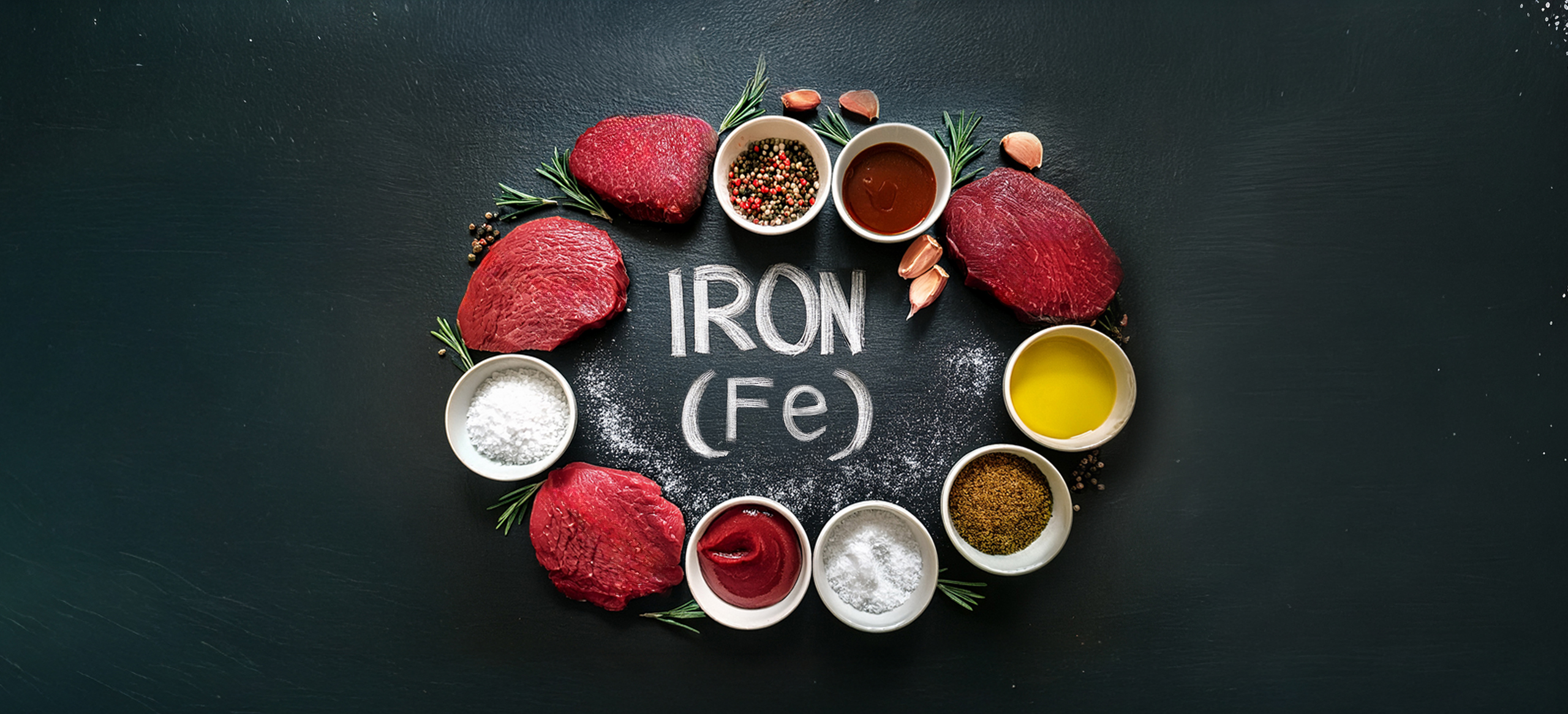Who Needs More Iron?
Iron is an essential mineral for human health, vital for carrying oxygen in the blood, supporting energy metabolism, and keeping the immune system strong. While everyone needs iron, certain groups of people require more than others due to life stage, biological differences, or lifestyle factors. Without enough, these individuals are at higher risk of iron deficiency and its consequences, including fatigue, impaired concentration, and weakened immunity.
Below, we look at the specific groups most likely to need increased iron in their diet—and why.
Women of Childbearing Age
Women between the ages of 15 and 50 generally have higher iron needs than men because of monthly blood loss during menstruation. On average, women lose about 30–40 milliliters of blood each cycle, which equates to around 15–20 milligrams of iron. To replace these losses and maintain healthy red blood cell levels, the recommended dietary intake for women is about 18 mg per day, more than double the requirement for adult men.
If this extra need is not met, women can become susceptible to iron deficiency anemia, which manifests as tiredness, dizziness, and poor concentration. Eating iron-rich foods like lean red meat, poultry, beans, lentils, and leafy greens, along with vitamin C to boost absorption, can help women maintain healthy iron stores.
Pregnant Women
During pregnancy, iron needs rise significantly. A mother’s body must produce extra blood to support the growing fetus and placenta. Additionally, the baby needs iron for brain development and to build up its own iron stores, which will sustain it for the first six months of life.
As a result, the recommended daily intake for pregnant women is 27 mg of iron per day—one of the highest requirements of any group. Many women struggle to meet this through diet alone, which is why doctors often recommend prenatal vitamins containing iron. Failure to get enough iron during pregnancy can increase the risk of premature birth, low birth weight, and maternal fatigue.
Infants and Young Children
Infants and toddlers grow rapidly, and with growth comes an increased demand for iron. Babies are born with a supply of iron stored from their mothers, but by around six months of age, those reserves begin to run low. This is why iron-rich complementary foods are so important once breastfeeding or formula alone is no longer sufficient.
Iron is essential at this stage for brain development, learning, and healthy growth. Without enough, children may experience delayed development, behavioral problems, or frequent illnesses. Good dietary sources for children include pureed meats, iron-fortified cereals, eggs, beans, and green vegetables.
Teenagers and Adolescents
Adolescence is another critical growth phase where iron needs spike. For teenage boys, increased muscle mass and blood volume demand more iron to support oxygen delivery. For teenage girls, the start of menstruation adds an additional requirement.
The recommended intake for teenage boys is 11 mg per day, while teenage girls need 15 mg per day. Failure to meet these needs can cause tiredness, difficulty concentrating in school, and reduced athletic performance. Encouraging teens to eat a varied diet that includes lean meats, fish, beans, nuts, and fortified cereals is vital.
Athletes and Active Individuals
Regular physical activity increases the body’s demand for iron in several ways. Exercise stimulates red blood cell production to deliver oxygen more efficiently to muscles. Endurance athletes, especially runners, may lose additional iron through sweating and the breakdown of red blood cells caused by repetitive impact (“foot strike hemolysis”).
Female athletes, who may already be at higher risk due to menstruation, are particularly vulnerable. Low iron levels can reduce stamina, increase fatigue, and impair recovery. Athletes should pay attention to their iron intake and consider regular blood tests to monitor levels if training intensively.
Vegetarians and Vegans
While plant-based diets can be very healthy, they rely heavily on non-heme iron, which is not absorbed as efficiently as heme iron from animal foods. This means vegetarians and vegans may need almost twice as much dietary iron to meet their body’s requirements.
Plant sources like lentils, chickpeas, tofu, spinach, pumpkin seeds, and fortified foods are valuable, but pairing them with vitamin C-rich foods is crucial to maximize absorption. Awareness and planning can help prevent deficiency in those following plant-based lifestyles.
The Takeaway
Iron is vital for everyone, but some groups—women, pregnant mothers, infants, teenagers, athletes, and those on plant-based diets—require extra attention to ensure their needs are met. For these individuals, focusing on iron-rich foods and enhancing absorption strategies is key to avoiding deficiency and maintaining energy, focus, and overall health. By tailoring iron intake to life stage and lifestyle, people can keep their bodies strong, resilient, and ready to thrive.

